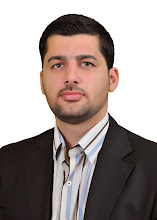Hosam Matar
Will Iran’s foreign policy change with the presidency of
Hassan Rowhani?
If yes, can this happen against the will of the supreme leader? To answer that
it is necessary to discover the distribution of power between them both, such
distribution is determined by the constitution, political traditions, informal
rules and structures, and personal characteristics (personality, Charisma, and historical record).
First, The Supreme Leader,
has a great symbolic and religious power as acting on behalf of the infallible
hidden Imam in leading the Islamic nation (not only Iran). As for the
constitution, Article 57 mentions that all the governing authorities in the
Islamic republic exercise their powers under the supervision of the Supreme Leader,
the Imam of the nation. Article 110 states that he is responsible to determine
and supervise the public policies [including foreign policies] after consulting
the Expediency Council, and to declare war. Moreover, as for The Supreme National Security Council (SNSC)
- the Islamic Republic’s key national defense and security body, Article 176
states that the SNSC’s responsibilities include determining “the defense and
national security policies within the framework of general policies determined
by the Leader”; this
council includes two representatives of the Supreme Leader. Also the
Supreme Leader can exert
influence at foreign policy by his authority to appoint certain officials, like
the commanders of the IRGC, the Joint Staff of the Armed Forces; and special
representatives.
Other factors and informal
networks maximize the role of the Supreme Leader at the foreign policy level.
The supreme leader can issue Fatwa (Islamic Judgment) related to specific
political cases with external impacts (Salman Rushdie case). Moreover,
although it is not a
constitutionally mandated body, the Strategic Council for Foreign Relations
(SCFR) is an important advisory council to the Supreme Leader; Khamenie established
it one year after Ahmadinejad presidency, possibly to maintain access to
seasoned foreign-policy advice in light of the Ahmadinejad team’s inexperience. Also, following the election of Ahmadinejad in 2005,
Khamenie granted the Expediency Council wide “supervisory authority” over the
three branches of government, presumably including foreign affairs; many have speculated that this was done
to limit Ahmadinejad’s authority.
In principle, the Supreme Leader determines the general framework
and the orientation of the foreign policy, which all the institutions must
respect and follow. However, in sensitive cases (as the nuclear issue), moments
of crisis, or when the Supreme Leader considers that his instructions are under
sever violation, he intervenes in a direct way in the details. However, the Supreme Leader has long exercised
influence over the Iranian system through “negative power” by blocking
alternative approaches or options, leaving limited options to the president
which he can choose from it. These powers of the Supreme Leader offer
him the ability to dissolve tensions between Iranian groups and elites
regarding foreign policy issues. Patrick Clawson argues that even the Iranian
elite does not share a common view on engagement with the international community
or the United States; however, the “Office of the Supreme Leader” had handled
these divisions relatively well.
Nevertheless, all of this does not mean that
the Supreme Leader holds an absolute role in foreign policy or acts without any
pressures. The Supreme Leader doesn’t take the
decision in a vacuum,” as Sadegh Zibakalam , who advised the campaign of Rowhani,
told CNN. The Supreme Leader is constrained relatively by internal political balance
of power, public opinion, and the constitutional powers of the president who deals with day-to-day foreign
policy and who may take certain decisions, issue statements, or launch
diplomatic initiatives that may oblige the regime. Also the Supreme Leader
needs information- technical, political and intelligence evaluations- that
comes from several sides with different backgrounds, and which have the power
to influence his decision.
In conclusion,
we will witness a different style and image in Iran’s foreign policy, less
ideological slogans for more pragmatic approach, and more smiles but without
weakness. Two main concerns will affect Iran’s foreign policy in Rowhani era,
economy and sectarian tensions, the former us related to international politics
while the latest is a regional one. It is very possible that there will be
limited agreement about the nuclear issue that may lead to reduce tensions and
sanctions. Probably, Iran will get an
official recognition as a “nuclear power” with its right to enrich uranium, in
return, Iran will grant more guarantees and accept to limit uranium enrichment
to low levels.
On the regional level, Iran will try to ease
sectarian tensions mainly in Iraq, Lebanon and Syria, so Iranians will try to
open new channels with regional powers and to build confidence with them.
However, the main problem is if these regional power will response to Iranian
steps or will continue to approach Iran through the American lenses. Any
changes in Iran’s foreign policy will not bypass its constants but will be more
flexible, and also such changes will not happen against the will of the supreme
leader, who is still the “ultimate
gatekeeper”.


ليست هناك تعليقات:
إرسال تعليق